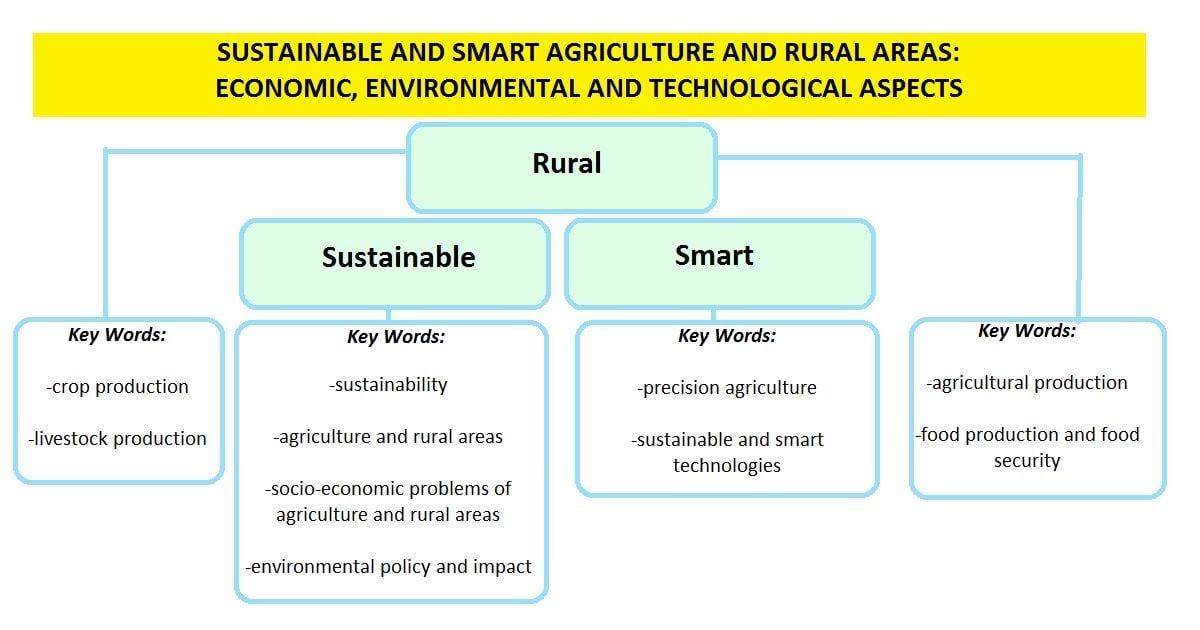Sustainable and Smart Agriculture and Rural Areas: Economic, Environmental and Technological Aspects
A special issue of Agriculture (ISSN 2077-0472). This special issue belongs to the section "Agricultural Economics, Policies and Rural Management".
Deadline for manuscript submissions: closed (26 August 2024) | Viewed by 17178

Special Issue Editors
Interests: sustainable development; sustainable development of rural areas and agriculture; education for sustainable development; rural advisory services; agricultural knowledge and innovation systems (AKIS); diffusion and adoption of innovations in rural areas; multifunctional development of rural areas; entrepreneurship; non-agricultural entrepreneurship in rural areas; horizontal and vertical integration in the food sector and agriculture; formation and operation of agricultural producer groups
Special Issues, Collections and Topics in MDPI journals
Interests: sustainable development; precision agriculture; smart village; bioeconomy; disruptive technologies; smart city; smart energy
Special Issue Information
Dear Colleagues,
Natural resources’ scarcity, an exponentially growing global population, food security and food supply chain disruptions, declining biodiversity, and the adverse effects of agricultural production on the environment are just a small fraction of the mounting challenges and crises contemporary agriculture is exposed to.
Sustainable and smart agricultural practices are regarded as potential solutions for these pressuring challenges and represent a gateway for the prospective future developments of the agricultural industry, science and policies. The definitions of sustainable agriculture and smart agriculture incorporate numerous varieties of economic, environmental and technological aspects and impacts affecting the successful implementation of these theoretical conceptions into real-world agricultural solutions.
All these aspects are reflected to a different extent in the various agricultural policies, practices and research developments, where they are perceived as separate concepts as well as interconnected conceptions with potential linkages, synergies, contradictions, discrepancies, and final trade-offs mitigating the divergences between them. Their impacts on the future agricultural developments could be beneficial or harmful, depending on the contexts, geographies and developmental stages they are implemented in.
Considering the diverse nature of sustainable agriculture and smart agriculture theoretical conceptions and real-world applications, this Special Issue welcomes the submission of original research, reviews, and perspective papers focused on the sustainable and smart development of agriculture and rural areas through the prism of economic, environmental, and technological challenges, implications and solutions.
Dr. Piotr Prus
Dr. Aksana Yarashynskaya
Guest Editors
Manuscript Submission Information
Manuscripts should be submitted online at www.mdpi.com by registering and logging in to this website. Once you are registered, click here to go to the submission form. Manuscripts can be submitted until the deadline. All submissions that pass pre-check are peer-reviewed. Accepted papers will be published continuously in the journal (as soon as accepted) and will be listed together on the special issue website. Research articles, review articles as well as short communications are invited. For planned papers, a title and short abstract (about 100 words) can be sent to the Editorial Office for announcement on this website.
Submitted manuscripts should not have been published previously, nor be under consideration for publication elsewhere (except conference proceedings papers). All manuscripts are thoroughly refereed through a single-blind peer-review process. A guide for authors and other relevant information for submission of manuscripts is available on the Instructions for Authors page. Agriculture is an international peer-reviewed open access monthly journal published by MDPI.
Please visit the Instructions for Authors page before submitting a manuscript. The Article Processing Charge (APC) for publication in this open access journal is 2600 CHF (Swiss Francs). Submitted papers should be well formatted and use good English. Authors may use MDPI's English editing service prior to publication or during author revisions.
Keywords
- sustainability
- agriculture and rural areas
- socio-economic problems of agriculture and rural areas
- environmental policy and impact
- sustainable and smart technologies
- precision agriculture
- agricultural production
- crop production
- livestock production
- food production and food security
Benefits of Publishing in a Special Issue
- Ease of navigation: Grouping papers by topic helps scholars navigate broad scope journals more efficiently.
- Greater discoverability: Special Issues support the reach and impact of scientific research. Articles in Special Issues are more discoverable and cited more frequently.
- Expansion of research network: Special Issues facilitate connections among authors, fostering scientific collaborations.
- External promotion: Articles in Special Issues are often promoted through the journal's social media, increasing their visibility.
- e-Book format: Special Issues with more than 10 articles can be published as dedicated e-books, ensuring wide and rapid dissemination.
Further information on MDPI's Special Issue polices can be found here.






